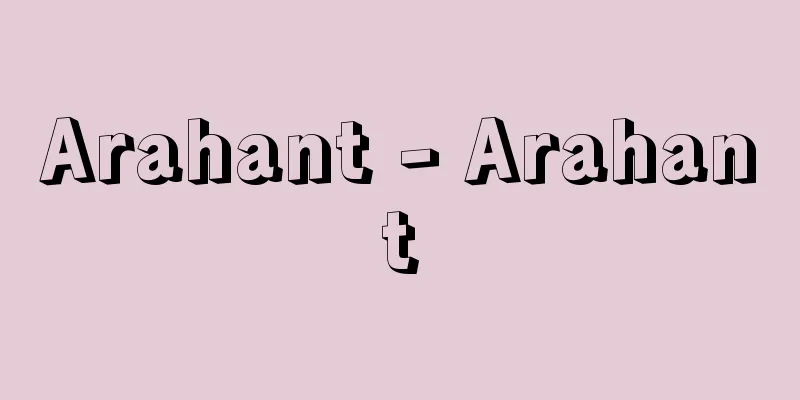Oe - Oe

|
...Apart from the hearth, housework and farm work were carried out, and all aspects of a farmer's life, except for outdoor work and sleeping, took place here. There are no common names for the rooms across the country, but in many regions they are called Joi (permanent residence), Oe, Daidokoro, Chanoma, Hiroma, etc. This type of indoor life, which developed around the family's common living space, began to break down in the latter half of the Edo period. ... *Some of the terminology explanations that mention "Oe" are listed below. Source | Heibonsha World Encyclopedia 2nd Edition | Information |
|
…いろりを離れた部分では,家事や農作業が行われ,農家の屋外作業と就寝を除いた全生活がこの場で繰り広げられる。部屋の名称としては,全国共通のものはないが,ジョイ(常居),オエ,ダイドコロ,チャノマ,ヒロマなどと呼ぶ地方が多い。このような家族共通の居間空間を中心に展開された屋内生活は,江戸時代の後半期になると崩れてくる。… ※「オエ」について言及している用語解説の一部を掲載しています。 出典|株式会社平凡社世界大百科事典 第2版について | 情報 |
Recommend
Cuuuuuuuuuuuuuuuuuuuu
...Some consonants change their shape when combin...
Hammerhead shark
…It is also called Kase. Its English name is Hamm...
Guarino da Verona (English spelling)
1374‐1460 Italian humanist teacher. Born in Verona...
Lee Toegye
A representative Confucian scholar and thinker of ...
Goryeo Celadon
A general term for celadon ware fired during the ...
Kasukawa [village] - Kasukawa
A village in Seta County, central Gunma Prefecture...
Gulliver's Travels
A satirical novel by British author J. Swift. Pub...
Yasumori Adachi
Year of death: November 17, 8th year of Koan (Dece...
Harpy eagle
A bird of the family Accipitridae, order Accipitr...
Hekikoku (English spelling) pì gǔ
One of the Chinese Taoist arts. "Bi" mea...
Howells, William Dean
Born March 1, 1837 in Martins Ferry, Ohio [Died] M...
Masatsugu Ando
Born: September 13, 1878 in Saitama [Died] Novembe...
Duck dishes - Kamo-ryori
...In the early modern period, while cranes were ...
Emperor Junna
Year of death: May 8, 7th year of Jowa (June 11, 8...
Development and import scheme
Resource import methods can be broadly categorize...









